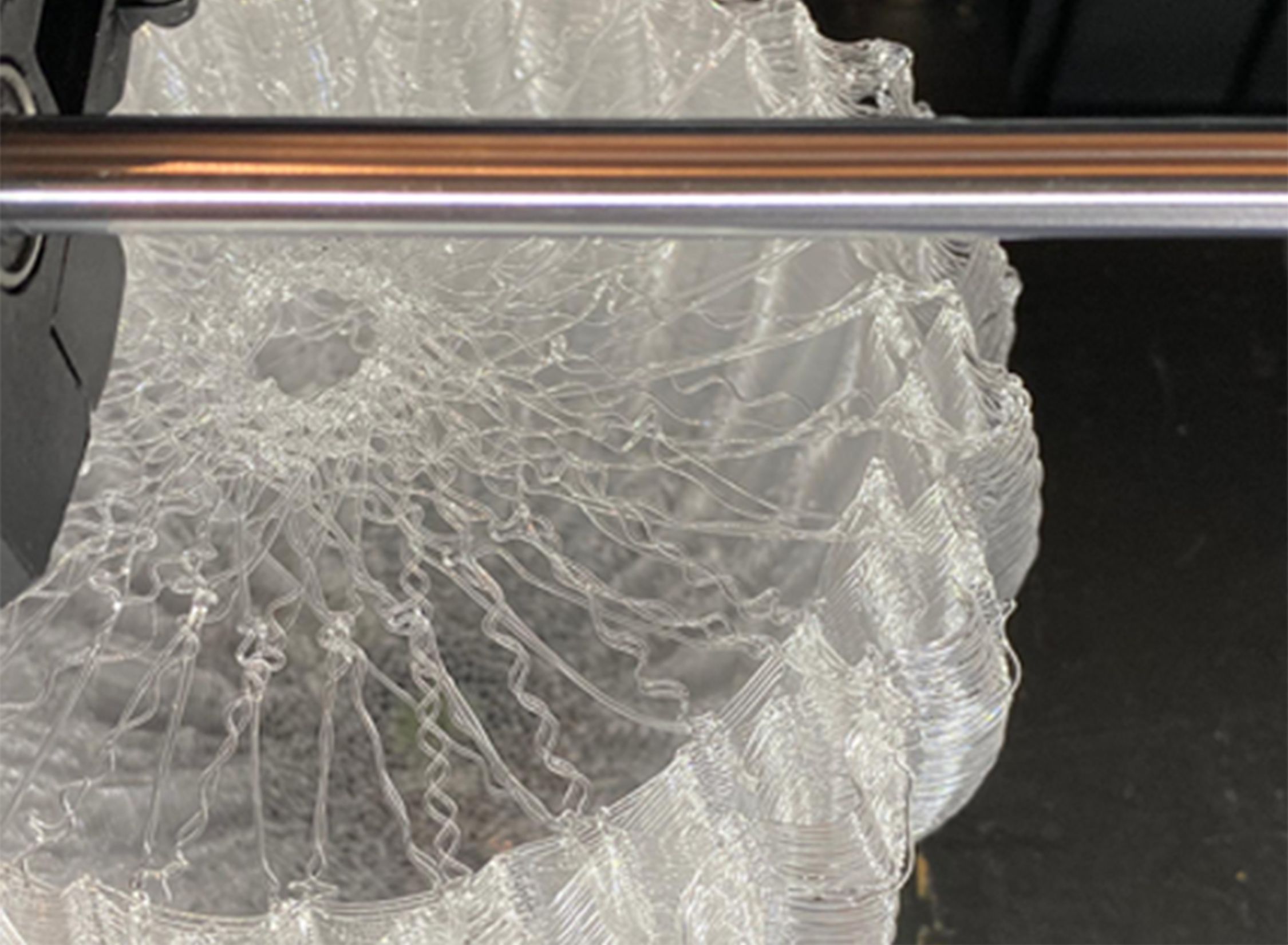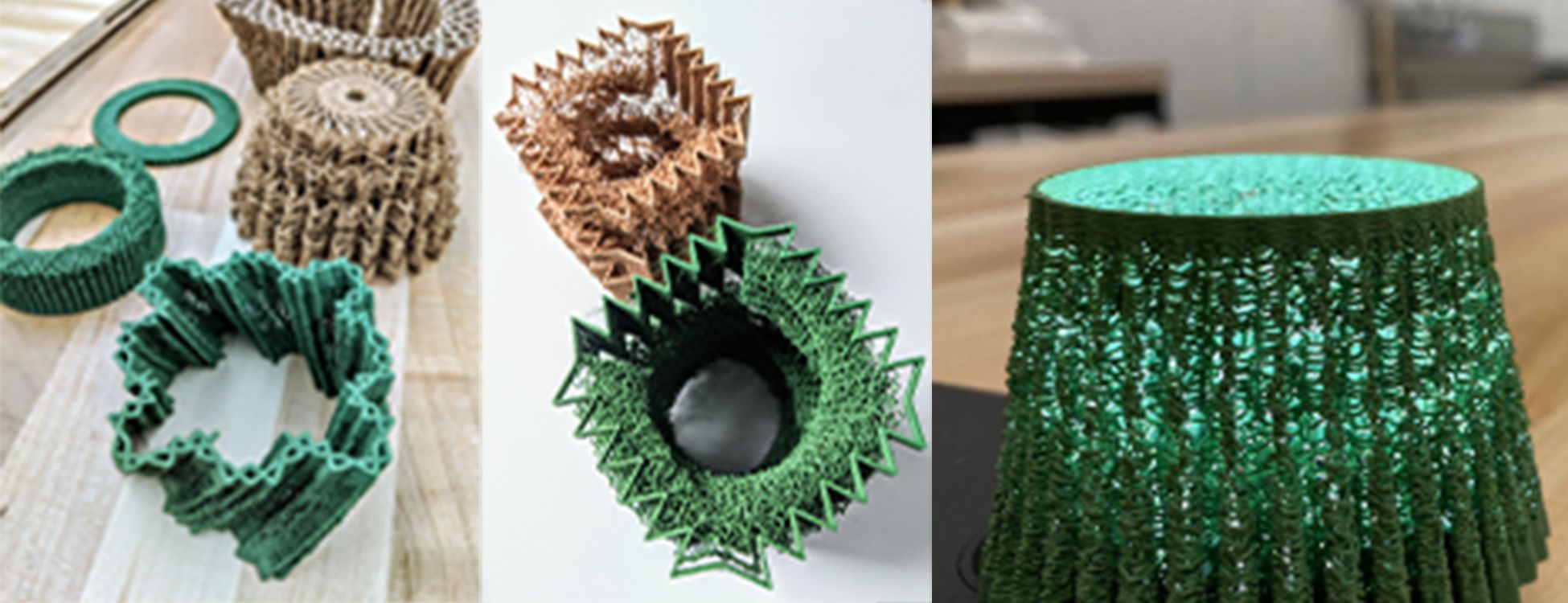PRINTING ERROR
A Slightly Uncertain Slicer

We were drawn together by our common interest in fragility and porosity. Conventional 3D printing "best practices" encourage the designer to generate "watertight solids" for error-free slicing and durable fabrication. Inspired by stitch patterns found on sewing and embroidery machines, we hoped to explore how far we could coax the printers to stray from solidity, opacity, and durability, while still retaining structural integrity.
PRINTING ERROR helps the user generate "stitch patterns" and translate them into 3D forms. The user can experiment with the distance between layers, introducing an element of chaos - the filament begins to curl if the distance is too great. The slicer familiarizes the user with a new set of practices, such as beginning and ending an experimental print with a "lock stitch" to prevent it from unraveling. While playing with our slicer, decay was on our mind: we printed a series of objects using wood and algae- based PLA, pursuing forms that would be strong enough to retain soil or serve as scaffolding for growing mycelium, but fragile enough to succumb to biodegradation over time. We were drawn to the transparency of these prints, and began a second series using semi-clear and clear PLA, investigating translucent effects.

